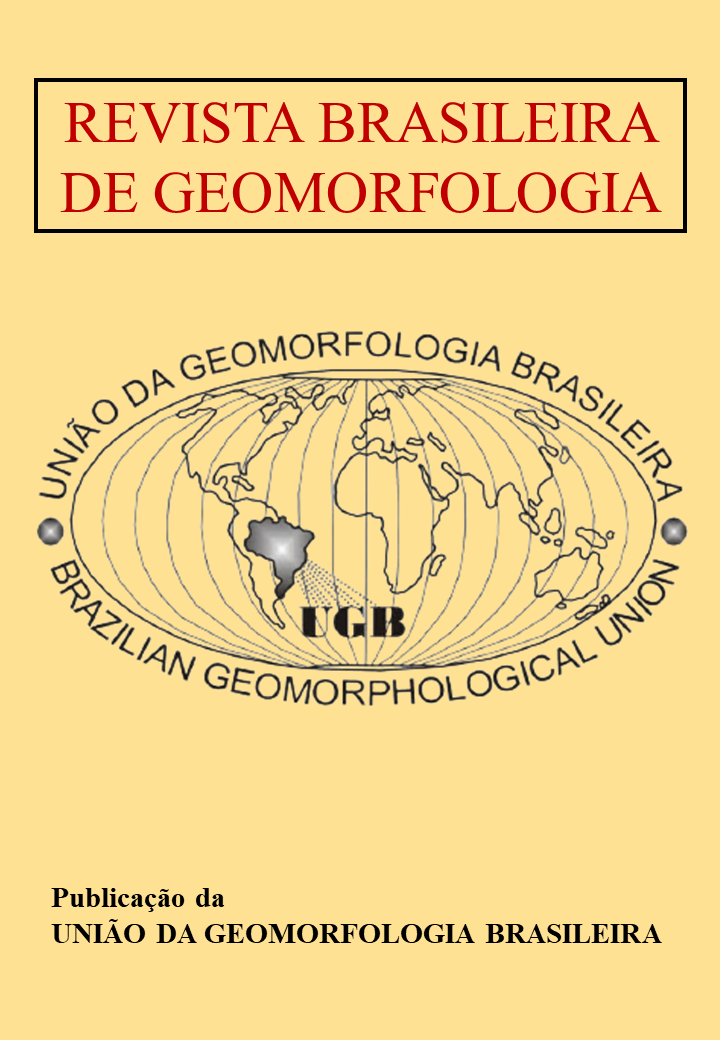Soil erosion vulnerability in Brazilian semiarid
DOI:
https://doi.org/10.20502/rbgeomorfologia.v25i2.2451Palabras clave:
Dry forest, Soil fragility, Desertification, Caatinga, DrylandsResumen
Soil erosion is one of the most dangerous impacts of climate change and anthropic disturbance in drylands. Its control and reduction of soil and nutrient loss are essential to maintaining terrestrial ecosystems. Rare studies present data about soil fragility in the Brazilian semiarid. This study aimed to measure soil resistance to erosion. Ten soil profiles were described and classified to represent vegetation cover and geological diversity. The water-stable aggregates (WSA) content is highly variable, regardless of the equivalent diameter of the aggregates. The lowest levels of WSA were recorded by Arenosol and A and E horizons of Solonetz. Plinthosol and argic horizon of Solonetz and Luvisol recorded the lowest levels of soil loss. Large and fine aggregates presented different stability mechanisms. Vegetation cover, clay, and sand contents intermediate the stability of aggregates larger than 1 mm. Soil reactivity, Al3+ content, and altitude are important for aggregates smaller than 1 mm. Conservation practices that favor coverage and maintenance of soil moisture and organic residues should be induced by the government and applied by small rural producers to minimize human environmental effects.
Descargas
Descargas
Publicado
Cómo citar
Número
Sección
Licencia

Esta obra está bajo una licencia internacional Creative Commons Atribución-NoComercial 4.0.
Autor(es) conservam os direitos de autor e concedem à revista o direito de primeira publicação, com o trabalho simultaneamente licenciado sob a Licença Creative Commons Attribution que permite a partilha do trabalho com reconhecimento da autoria e publicação inicial nesta revista.









